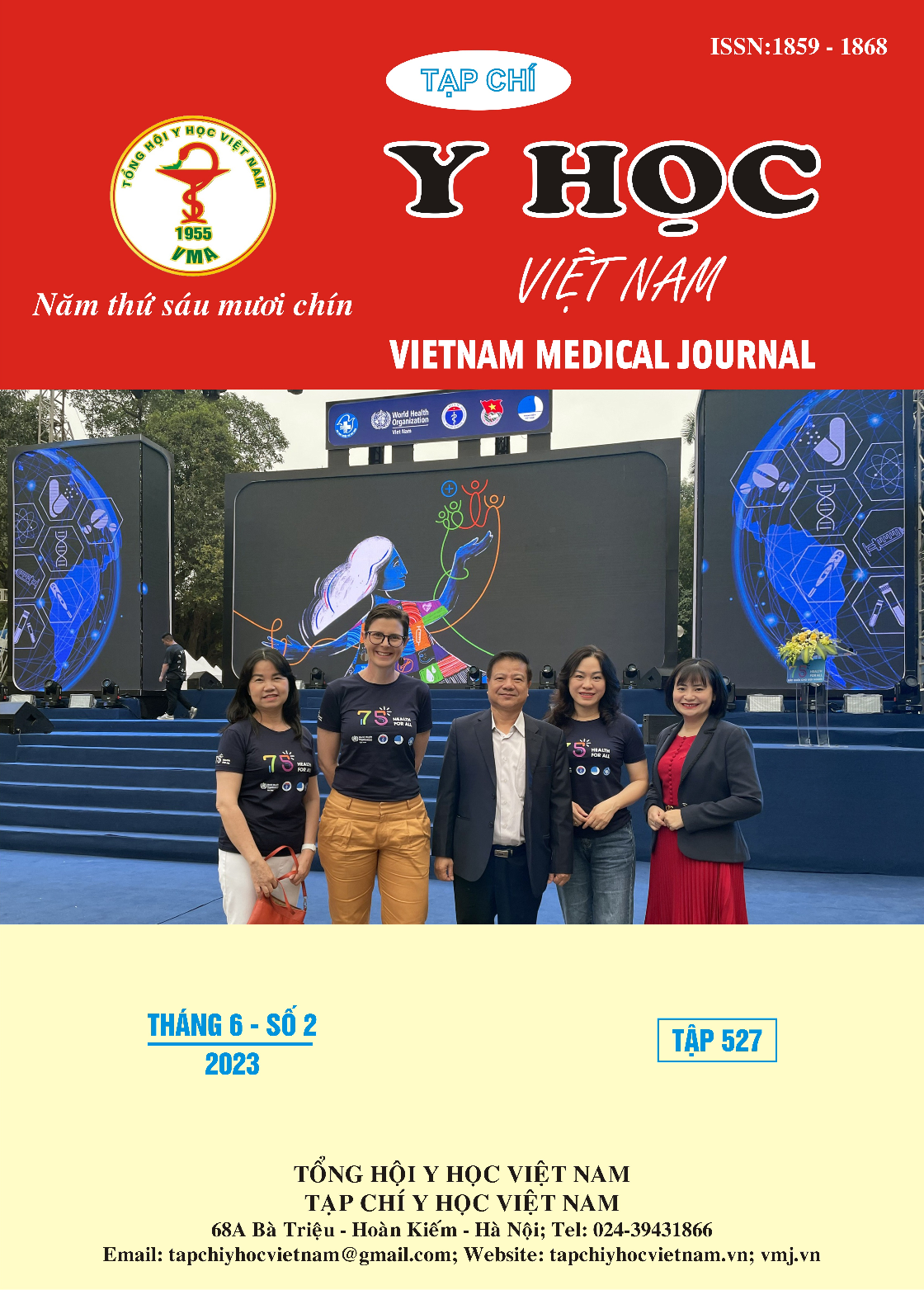ASYMMETRY BETWEEN TEETH AND DENTAL ARCHES IN A GROUP OF STUDENTS AGED 18-24 IN HANOI
Main Article Content
Abstract
Objective: To determine the distribution of the prevalence of asymmetry between teeth and dental arches in a group of students aged 18-24. Subjects and methods: A cross-sectional descriptive study was conducted using clinical examinations and measurements on plaster dental arch models of 305 subjects from the Vietnam National University, Hanoi and the Hanoi University of Business & Technology (136 males, 169 females), aged 18-24. Results: For the upper jaw, the majority of cases had an X discrepancy of ≤ 0 mm in both genders, followed by a discrepancy of 0 < X ≤ 5mm at a lower rate, with no cases having an X discrepancy of > 5mm. For the lower jaw, the majority of cases had an X discrepancy of ≤ 0 mm in both genders, with an X discrepancy of ≥ 10mm and X ≤ 0 mm at a lower rate, and no cases had an X discrepancy of 5 < X < 10 mm. According to Angle's classification of occlusion, in the upper jaw, the X discrepancy of ≤ 0 mm in Class 0, I, and II had a high rate (Class 0: 31.1%; Class I: 20.7%; Class II: 25.3%; Class III: 0.3%), and the X discrepancy of 0 < X ≤ 5mm in Class I Angle had the majority (17.0%); in the lower jaw, the X discrepancy of ≤ 0 mm in Class 0, I, and II had a high rate (Class 0: 31.9%; Class I: 26.6%; Class II: 26.6%; Class III: 0.7%), and the X discrepancy of 0 < X ≤ 5mm in Class I Angle had the majority (10.2%). Conclusion: The levels of minor space deficiency and excess space had the highest rates in both jaws, with no significant differences in space deficiency rates between males and females. The distribution of minor space deficiency and no space deficiency in neutral occlusion, Class I and II malocclusions was higher than in Class III Angle.
Article Details
Keywords
dental arch, plaster dental model, teeth-arch correlation
References
2. Tạ Thị Hồng Nhung và cs (2017). Tương quan giữa hình dạng răng cửa hàm trên và hình dạng cung răng trên một nhóm đối tượng người Việt trưởng thành tuổi 18-25 ở Hà Nội năm 2017, Tạp chí Y dược Học Quân Sự, 42, 495-502.
3. Đống Khắc Thẩm (2004). Chỉnh hình can thiệp sai khớp cắn hạng 1 Angle, Chỉnh hình răng mặt, Nhà xuất bản Y học, 155-176.
4. Đồng Thị Mai Hương (2012). Nghiên cứu tình trạng lệch lạc khớp cắn và nhu cầu điều trị chỉnh nha của sinh viên trường Đại học Y Hải Phòng. Luận văn Thạc sĩ Y học, 16-76.
5. Tạ Ngọc Nghĩa (2017). Nhận xét một số đặc điểm khớp cắn và kích thước cung răng ở người Việt độ tuổi 18-25. Tạp chí Y Dược học Quân sự, 42:465-471.
6. Evans R., Shaw W. (1987). A preliminary evaluation of an illustrated scale for rating dental attractiveness. European Journal of orthodontic, 9:314-318.
7. Brook Ph., Shaw W. (1989). The development of an index of orthodontic. Eur J Orthod., 11(3):309-320.
8. Wang G, Hagg U, Ling J (2009). The orthodontic treatment need and demand of Hong Kong Chinese children, Am. J. Orthodontic, 24-36.
9. Hoàng Thị Bạch Dương (2000). Điều tra về lệch lạc răng - hàm trẻ em lứa tuổi 12 tại trường cấp 2 Amsterdam Hà Nội, Luận văn Thạc sĩ y khoa, 48-50.


